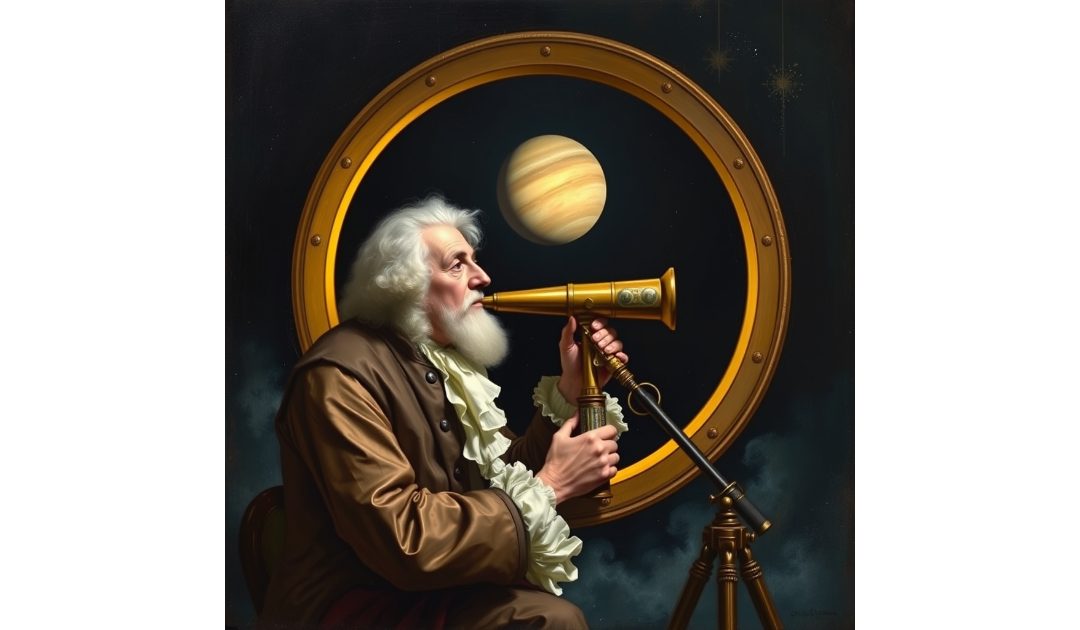On the 4th of March 1675 John Flamsteed was appointed the first Astronomer Royal by King Charles II and was tasked with creating accurate star charts to aid navigation. He founded the Royal Greenwich Observatory and produced the first comprehensive star catalogue, the Historia Coelestis Britannica. Despite conflicts with Isaac Newton over data publication, Flamsteed laid the foundations for modern observational astronomy.
Edmond Halley, best known for predicting the return of Halley’s Comet, succeeded Flamsteed. He improved navigational methods and advocated for better star mapping in the Southern Hemisphere. His work on planetary motion and magnetic field studies influenced both astronomy and geophysics.
In 1742 James Bradley came next. Bradley is famous for discovering stellar aberration, which provided the first direct evidence of Earth’s motion around the Sun. He also identified nutation, a small wobble in Earth’s axis. His precise star measurements greatly advanced celestial mechanics.
Nevil Maskelyne held the post from 1765 to 1811. Maskelyne played a key role in developing the Nautical Almanac, a publication that helped sailors determine longitude at sea. He was involved in testing John Harrison’s marine chronometers and promoted accurate timekeeping for navigation.
Maskelyne was followed by James Pond. Pond introduced precise astronomical instruments and improved star position measurements. He modernised the Greenwich Observatory, making it one of the world’s most accurate observatories at the time.
Next came George Biddell Airy, from 1835 until 1881. Airy was a dominant figure in British astronomy. He introduced the Greenwich Meridian as the international standard for longitude and improved telescopic accuracy. He also attempted to detect Earth’s density using pendulum experiments.
Between 1881 and 1910 William Christie expanded the Royal Observatory’s photographic star mapping, aiding international efforts to create detailed celestial atlases. He modernised Greenwich’s equipment, ensuring its continued relevance in global astronomy.
From 1910 to 1933 Frank Dyson held the reins. He helped confirm Einstein’s General Theory of Relativity by organising the famous 1919 solar eclipse expedition, which proved that light bends around the Sun due to gravity. He also contributed to the introduction of the Greenwich Time Signal (the pips) for accurate timekeeping.
Harold Spencer Jones (1933 – 1955) refined the astronomical unit (AU), measuring the Earth-Sun distance with greater accuracy. He oversaw the Royal Observatory’s relocation from Greenwich to Herstmonceux due to light pollution in London.
Richard Woolley (1956 -1971) initially dismissed space travel as “utter bilge” but later contributed to radio astronomy. He guided British astronomy through the early space age and supported the development of larger telescopes.
Martin Ryle (1972 – 1982) pioneered radio astronomy and won the Nobel Prize in 1974 for his work on radio telescopes. His research helped map distant galaxies and improve understanding of quasars.
Frank Graham-Smith (1982 – 1990) worked on improving astronomical instruments, particularly for radio wave observations.
Arnold Wolfendale (1991-1995) specialised in cosmic rays and high-energy astrophysics, advancing knowledge of particle interactions in space.
Martin Rees (1995 – Present) is one of the most influential theoretical astrophysicists of modern times. He studied black holes, galaxy formation, and the early universe, while also raising awareness about space threats, including asteroids and climate change.

